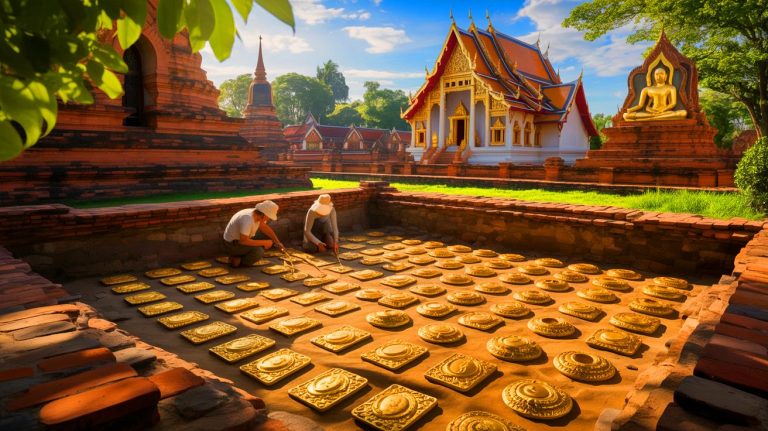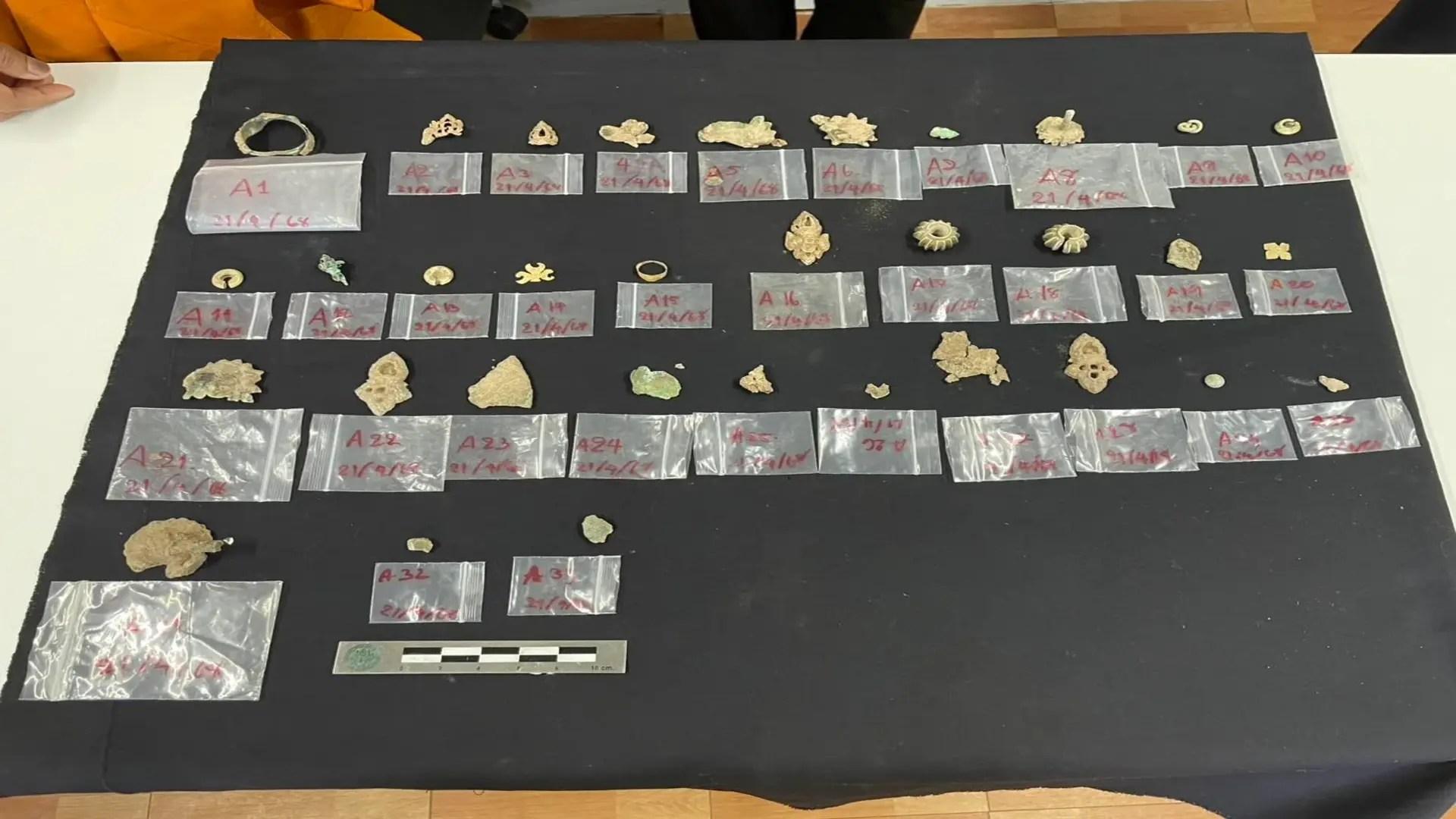| IN A NUTSHELL |
|
In a groundbreaking discovery that has captured the attention of historians and art enthusiasts alike, a team of archaeologists uncovered a treasure trove of gold, silver, and bronze artifacts beneath a famous Buddhist temple in northeastern Thailand. This discovery not only highlights the region’s rich artistic heritage but also underscores the extensive cultural exchanges that took place across Southeast Asia during the Dvaravati period. The artifacts, including intricate gold rings and Buddha reliefs, offer a glimpse into a sophisticated civilization that thrived over a millennium ago, revealing deep spiritual and artistic traditions.
Treasures Unearthed at the Wat Dhammachak Semaram
The Wat Dhammachak Semaram, renowned for its colossal sandstone reclining Buddha, has become the focal point of this remarkable discovery. The statue, believed to have been sculpted in 657 CE, lies within a temple that now serves as a museum-like space. Its position—with the head facing south and the face eastward—adds to its historical intrigue. During routine work to install an underground drainage system, workers stumbled upon a damaged ceramic container. Inside, they found a collection of precious items, including gold rings, silver earrings, and bronze spiral hoop earrings, which are thought to have been offerings to Buddha.
Encouraged by this unexpected find, archaeologists embarked on further excavations, unearthing additional treasures adorned with religious iconography. Among these, a repoussé gold sheet depicting a cross-legged Buddha in the Vitarka Mudra, a symbolic hand gesture of teaching and wisdom, stood out. Measuring 3.15 x 4.9 inches, this piece is a testament to the sophisticated artistry of the Dvaravati period, featuring distinctive elements such as spiral curls and elongated earlobes. The discovery of another relief, albeit damaged, depicting Buddha with attendants, adds to the narrative of religious significance and artistic expression during this era.
Thailand’s Rich Cultural Heritage
The Wat Dhammachak Semaram has roots that run deep into Thailand’s cultural heritage. Constructed during King Ramaraj’s reign, the temple not only houses the reclining Buddha but also a significant sandstone Dhammachakra, or Wheel of Dharma. This artifact is intricately engraved with forest deities linked to the sacred Bodhi and Banyan trees, showcasing carvings on both sides. The site has yielded numerous other historical objects, such as metallic Buddha images, terracotta amulets, glass beads, and inscribed stone slabs, many of which are now displayed at the National Museum of Phimai.
The recent discoveries at Wat Dhammachak Semaram have been transferred to Phimai for a comprehensive assessment. These items, alongside the existing collection, highlight the remarkable craftsmanship, religious iconography, and cultural exchanges that defined Southeast Asia in this period. The artifacts not only serve as a window into the past but also underscore the complex interactions between different cultures, as evidenced by the blend of Hindu and Buddhist elements in the iconography.
Intricate Artistry and Cultural Exchange
At the heart of these discoveries lies the intricate artistry that characterized the Dvaravati period. The repoussé technique used in crafting the gold sheets is a testament to the advanced metalworking skills of the time. The detailed depiction of Buddha and other religious figures reflects a deep spiritual dedication and an appreciation for artistic expression. This artistry was not limited to religious items but extended to everyday objects, indicating a culture that valued beauty and craftsmanship across various aspects of life.
The finds at Wat Dhammachak Semaram also shed light on the extensive cultural exchange networks that existed in Southeast Asia. The iconography of the artifacts reveals influences from neighboring regions, suggesting that Thailand was a significant hub for cultural and religious interchanges. This blending of styles and motifs highlights the interconnectedness of ancient civilizations and the movement of ideas, goods, and artisans across vast distances.
The Legacy of the Dvaravati Period
The Dvaravati period, spanning approximately the 6th to the 11th century, is a crucial chapter in Southeast Asian history. It laid the foundation for future cultural and religious developments in the region. The recent discoveries at Wat Dhammachak Semaram offer valuable insights into this era, illustrating the sophistication and diversity of Dvaravati society. The artifacts reflect a time when art, religion, and daily life were deeply intertwined, creating a legacy that continues to influence Thai culture today.
As we delve deeper into the past through these discoveries, we are reminded of the enduring impact of ancient civilizations on our modern world. The treasures of Wat Dhammachak Semaram invite us to consider how cultural exchange and artistic expression have shaped human history. What other hidden stories lie beneath the surface, waiting to be uncovered by future generations?
Did you like it? 4.2/5 (21)












Wow, what an incredible discovery! Can’t wait to see these artifacts in person someday. 🌟
How did these artifacts remain hidden for so long? It’s amazing that they were found during routine work.
Is there any chance more treasures could be found in the same area? 🤔
I guess the temple was sitting on a gold mine, literally! 😂
What will happen to the artifacts now? Are they going to be displayed in a museum?
Do we know who might have created these beautiful pieces? Such intricate work! 🎨
This is absolutely fascinating! History is full of surprises.